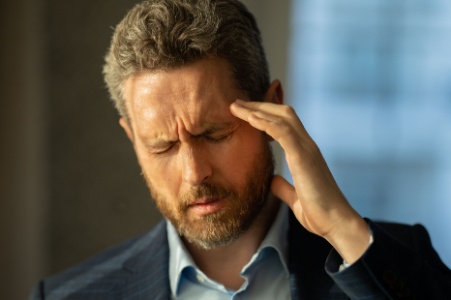Items filtered by date: September 2025
Knee Pain and Chiropractic Care

Knee pain can affect people of all ages and activity levels. It may be defined as discomfort or stiffness in or around the knee joint that can limit daily movement. Types of knee pain include acute injuries, such as sprains or ligament tears, as well as chronic conditions like arthritis or tendonitis. Causes often include overuse, poor posture, muscle imbalances, or sudden trauma. A chiropractor can help by improving joint alignment, reducing inflammation, and restoring balance to the surrounding muscles and tissues. If you are struggling with knee pain that interferes with your life, it is suggested that you consult a chiropractor to schedule an appointment and begin your journey toward natural relief and healing.
Knee Pain
Knee pain is a frequent complaint that can arise from injuries, overuse, arthritis, or misalignments in the body. This pain can disrupt daily life, limiting movement and impacting quality of life. Knee discomfort often develops when the body’s structural alignment is off, which places extra strain on the knee joint and surrounding muscles and ligaments.
Chiropractic care focuses on reducing knee pain by assessing and addressing alignment throughout the lower body. Gentle adjustments may be used to realign the knee and correct imbalances in the hip, pelvis, and spine that contribute to excessive knee stress. Restoring alignment in these areas can relieve pressure on the joint, ease pain, and promote improved mobility.
To support these adjustments, chiropractors often incorporate exercises, stretches, and lifestyle guidance to improve strength and flexibility around the knee. Strengthening muscles surrounding the joint can offer additional stability, helping to prevent future injuries.
Is knee pain treatment going to be painful?
Patients may worry that adjustments or other treatments will hurt. Chiropractors reassure patients that the techniques used are generally gentle, with any discomfort being mild and short-lived. They work within the patient’s pain tolerance.
How many sessions will I need?
Frequency and number of sessions depend on the pain’s severity and the patient’s response to treatment. Chiropractors often suggest a treatment plan tailored to the individual, sometimes starting with frequent visits and tapering as improvement occurs.
If you have any questions please feel free to contact our office located in Abilene, TX .
Chronic Headache Relief Through Alignment

If you suffer from chronic headaches, they may be linked to tension, nerve pressure, or strain in the neck and upper back. These factors can affect nearby nerves and contribute to ongoing headache pain. Gentle adjustments may help ease tension, improve alignment, and support better nerve function.
Find lasting relief from headache pain. Schedule your appointment today.
Types of Arthritis and Their Impact

Arthritis is a condition that causes inflammation and stiffness in the joints, affecting mobility and quality of life. Osteoarthritis develops from wear and tear, commonly impacting the knees, hips, and fingers. Rheumatoid arthritis is an autoimmune disorder that often affects the hands, wrists, and knees, causing pain and swelling. Psoriatic arthritis is linked with psoriasis and may involve the fingers, thumbs, and larger joints. Each form can lead to reduced flexibility, chronic pain, and difficulty with daily tasks. A chiropractor can help by improving joint alignment, reducing strain, and enhancing mobility through targeted adjustments. If arthritis is limiting your activities, it is suggested that you contact a chiropractor to schedule an appointment for supportive and natural, effective care.
Arthritis Relief
Arthritis, a common condition affecting millions, causes inflammation, stiffness, and pain in the joints. It can make everyday activities challenging and significantly impact quality of life. While there is no cure for arthritis, chiropractic care offers a natural, non-invasive way to manage symptoms and improve joint function.
Chiropractors focus on enhancing joint mobility and reducing inflammation through gentle, targeted adjustments. By realigning the body and restoring proper movement, chiropractic care can help relieve the pressure on arthritic joints, alleviating pain and stiffness. Adjustments also support better circulation, which may help reduce inflammation around affected joints.
In addition to adjustments, chiropractors often recommend specific exercises and stretches to strengthen muscles surrounding the joints, improving stability and reducing stress on the joints over time. They may also advise on lifestyle adjustments, such as dietary changes or ergonomic modifications, to support overall joint health.
Why Consider Chiropractic for Arthritis?
Chiropractic care provides a holistic approach to managing arthritis, addressing not just the symptoms but also underlying issues that contribute to discomfort. With regular care, many arthritis patients experience improved mobility, reduced pain, and a higher quality of life. Chiropractic care can be an effective complement to other arthritis treatments, supporting a more active, comfortable lifestyle.
What Types of Arthritis Can Benefit from Chiropractic Care?
Chiropractic care can benefit both osteoarthritis and rheumatoid arthritis by focusing on reducing joint strain and promoting better movement.
If you have any questions, please feel free to contact our office located in Abilene, TX .
Types of Chronic Daily Headaches

Chronic daily headaches occur frequently, often lasting for weeks or months, and can significantly affect quality of life. Common causes include migraines, which bring throbbing pain and a sensitivity to light or sound, and tension headaches, which create tightness or pressure around the head and neck. Stress, poor posture, and muscle strain are frequent triggers that worsen these conditions. A chiropractor can help by correcting spinal misalignments, reducing muscle tension, and improving posture to decrease headache frequency and intensity. If you are struggling with chronic headaches that interfere with your daily routine, it is suggested that you promptly consult a chiropractor to take the first step toward natural relief and long-term wellness.
Chronic Headaches
Chronic headaches can disrupt daily life, but chiropractic care offers an effective, holistic approach to managing and relieving headache symptoms. Chiropractors assess spinal alignment, posture, and muscle tension, which often play a role in chronic headaches. By addressing these factors, chiropractic care aims to reduce headache frequency and intensity.
A Chiropractor’s Approach
A chiropractor’s approach typically includes spinal adjustments, which help alleviate tension in the neck and upper back that may contribute to headaches. Chiropractic care may also incorporate lifestyle advice, including guidance on ergonomics, stress management, and targeted exercises tailored to reduce headache triggers. Regular adjustments provide a preventive approach, supporting overall spinal health and minimizing factors that can cause or worsen headaches.
Why Is Regular Chiropractic Care Important for Headache Relief?
Ongoing chiropractic care can relieve tension and prevent misalignments, both of which are common headache triggers, allowing patients to achieve long-term relief.
When Should You Consider Chiropractic Care?
Patients with frequent headaches should consider regular chiropractic visits, often recommended every few months or as advised, to support effective headache management.
If you have any questions, please feel free to contact our office located in Abilene, TX .
Find Relief From Tennis Elbow

Tennis elbow is pain and tenderness on the outer part of the elbow caused by a strain to the tendon that attaches there. While commonly linked to playing tennis, it often develops from repetitive motions such as using a screwdriver, lifting objects with an extended wrist, or even throwing a frisbee. Symptoms of tennis elbow include dull pain, stiffness, and weakness, which may be triggered by simple activities like holding a cup or shaking hands. A chiropractor can assess the elbow, identify the strained tendon, and provide treatment to relieve pain, improve function, and support proper joint mechanics. Treatment at an office visit may involve gentle adjustments or soft tissue techniques. Guidance on exercises to strengthen the muscles of the forearm and improve wrist and elbow flexibility may be recommended. If you are experiencing elbow pain, it is suggested that you schedule an appointment with a chiropractor for natural relief.
Tennis and Golfer's Elbow
Tennis and golfer's elbow, or medial epicondylitis, is a condition caused by inflammation or irritation of the tendons on the inner side of the elbow. Despite its name, this condition is not limited to golfers and tennis players. It can affect anyone engaging in repetitive wrist or forearm motions, such as throwing, lifting, or typing. Symptoms include pain, tenderness, and stiffness on the inner elbow, sometimes extending into the forearm. Weak grip strength and difficulty with everyday tasks are common complaints.
Chiropractic care can play a role in managing golfer's elbow by addressing muscle tension and improving joint function. Gentle adjustments may reduce strain on the affected area, while soft tissue therapies and stretching techniques can help alleviate discomfort and promote healing. Chiropractors may also provide advice on modifying activities to reduce stress on the tendons, offering a holistic approach to recovery and prevention.
1. Can tennis or golfer’s elbow occur without playing sports?
Yes, these conditions are often caused by repetitive motions like typing, lifting, or using tools. Chiropractors can assess and treat the root causes of these repetitive strain injuries.
2. Should I avoid chiropractic care during the acute phase of tennis or golfer's elbow?
Gentle adjustments and soft tissue techniques can still be beneficial, reducing inflammation and improving mobility without aggravating the injury.
For additional information, please contact our office located in Abilene, TX .
Carpal Tunnel Syndrome and Chiropractic Solutions

Carpal tunnel syndrome is caused by pressure on the median nerve as it passes through the wrist, leading to tingling, numbness, or weakness in the hand. It can result from repetitive hand movements, wrist injuries, or inflammation. Risk factors include repetitive strain from typing or assembly work, pregnancy, arthritis, and certain medical conditions like diabetes. A chiropractor can help by addressing nerve compression, improving joint alignment, and recommending exercises to reduce strain. They may also advise on ergonomic changes to prevent further injury. If you are experiencing wrist or hand discomfort, early intervention is key, and it is suggested that you visit a chiropractor to relieve symptoms, support healing, and prevent long-term complications.
Carpal Tunnel Syndrome
Carpal tunnel syndrome, or CTS, is a condition caused by compression of the median nerve, which runs through the carpal tunnel in the wrist. This tunnel is a narrow passageway surrounded by bones and ligaments, and when it becomes compressed or inflamed, it can put pressure on the nerve. Symptoms of CTS include tingling, numbness, weakness, and pain in the hand and fingers, often making simple tasks difficult and uncomfortable.
Chiropractic care offers a non-invasive approach to managing CTS by addressing alignment and reducing nerve pressure. Chiropractors start by evaluating the wrist, elbow, and even the cervical spine or neck, as misalignments in these areas can contribute to nerve compression in the wrist. Through gentle adjustments, chiropractors can improve the alignment of the wrist and spine, helping to reduce the pressure on the median nerve.
In addition to adjustments, chiropractors may use soft tissue therapy, such as stretching and myofascial release, to reduce inflammation surrounding the wrist and enhance mobility.
Why Consider Chiropractic for CTS?
Chiropractic care can provide lasting relief by targeting the root causes of CTS, reducing pain, and promoting long-term hand and wrist health.
Can Chiropractic Care Address Repetitive Strain as a Cause of CTS?
Chiropractic care can help manage repetitive strain by improving joint alignment and recommending ergonomic adjustments.
If you have any questions, please feel free to contact our office located in Abilene, TX .
